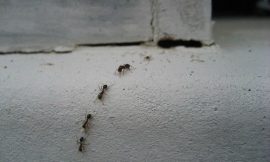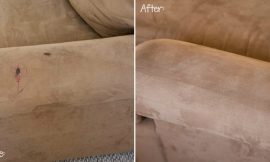
Is your laundry smelling less than fresh lately? You might be surprised to find out that mold could be lurking in your washing machine hose, a hidden culprit that affects your laundry's cleanliness! According to recent studies, mold can thrive in dark, damp environments, making your washing machine hoses an ideal breeding ground. But don’t worry! In this article, I'll walk you through five quick and easy steps to eliminate mold from your washing machine hose. Let’s dive in and make your laundry experience odor-free again!
Why Mold Grows in Washing Machine Hoses
Mold tends to thrive in environments that offer the perfect conditions: moisture, darkness, and warmth. Washing machine hoses can easily fall into this category, especially after a cycle when water remains in the hoses. You might also notice signs of mold presence, such as a musty smell or visible black spots on the hose. It's essential to address these signs promptly since mold exposure can lead to health risks like allergies, respiratory problems, and other issues.
Gather Your Supplies
Before you dive into cleaning, make sure you have all the necessary supplies on hand. You'll need vinegar, baking soda, a brush, and gloves to protect your hands. If you're leaning towards eco-friendly options, both vinegar and baking soda are excellent choices as they are non-toxic and effective. Always remember to take safety precautions when handling any cleaning agents, even if they are natural. Using gloves can help prevent skin irritation, and it's best to work in a well-ventilated area.
Step-by-Step Cleaning Process
Step 1: Start by disconnecting the hose from the washing machine. This is crucial for ensuring your safety and making the cleaning process easier.
Step 2: Once disconnected, empty any remaining water in the hose. After this, take a moment to inspect the hose and remove any visible mold you can see.
Step 3: Now it's time to create a potent cleaning solution. Mix vinegar and baking soda to form a foamy concoction that will help eliminate mold and bacteria.
Step 4: Use a brush to scrub the inside of the hose with your cleaning solution. Make sure to scrub thoroughly, as this will help dislodge any stubborn mold.
Step 5: After scrubbing, rinse the hose with warm water. It's important to let it dry completely before reconnecting it to ensure that no moisture is left, which could promote further mold growth.
Preventative Measures to Avoid Future Mold Growth
Regular maintenance is crucial in preventing mold from reoccurring. Establish a cleaning schedule that works for you—this could be monthly or bi-monthly depending on your usage. Additionally, keeping your washing machine dry and well-ventilated can significantly reduce the risk of mold. Consider leaving the washing machine door ajar after use to let air circulate inside. Another helpful tip is to use your washing machine efficiently; avoid overloading it and try to run full loads to decrease the frequency of cycles.
When to Call a Professional
Despite your best efforts, there may be signs that indicate you should seek professional help. If you're facing persistent mold issues that don't respond to your cleaning efforts, or if you notice damage to the hose, it’s time to call in an expert. Having a professional service perform routine checks can be beneficial as they have the tools and knowledge to effectively tackle any problems. For finding trusted services, look for recommendations from friends or online resources with customer reviews to ensure you're hiring a reputable team.
Conclusion
Eliminating mold from your washing machine hose doesn’t have to be a daunting task! By following these five quick and simple steps, you can enjoy cleaner, fresher laundry and a healthier home environment. Remember, regular maintenance is key to preventing mold from return. Let's take action today! If you found these tips helpful, share them with your friends and family to help everyone keep mold at bay!







